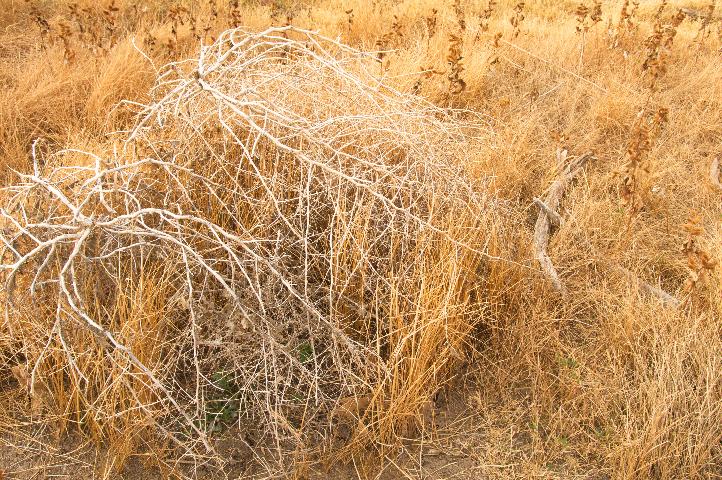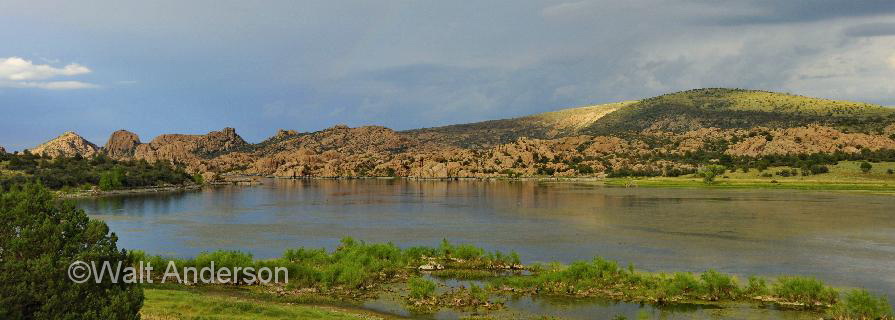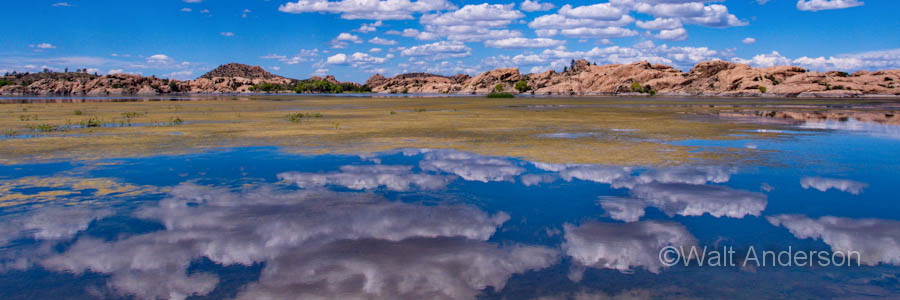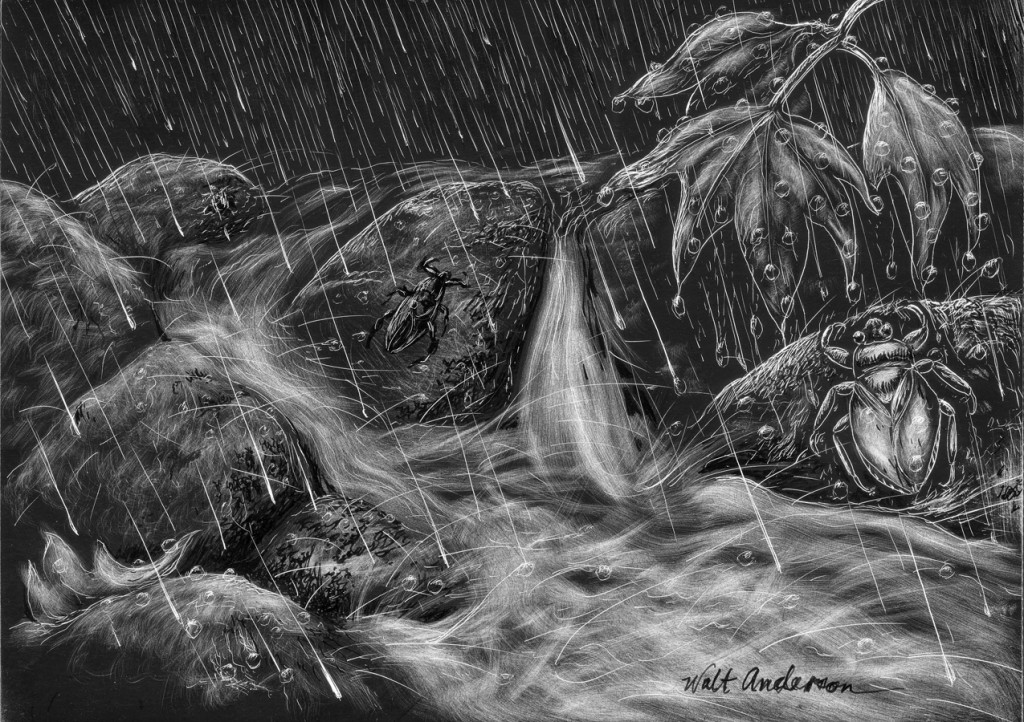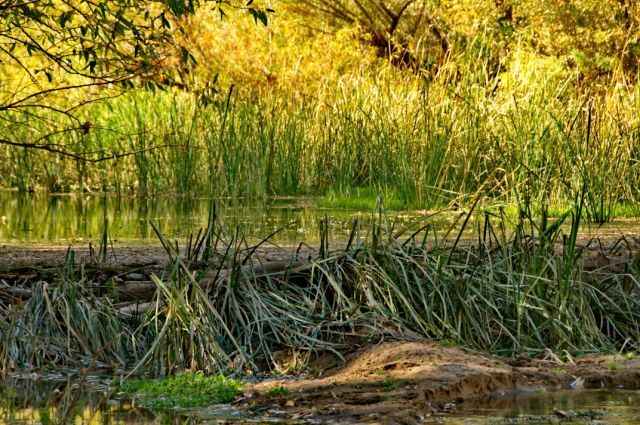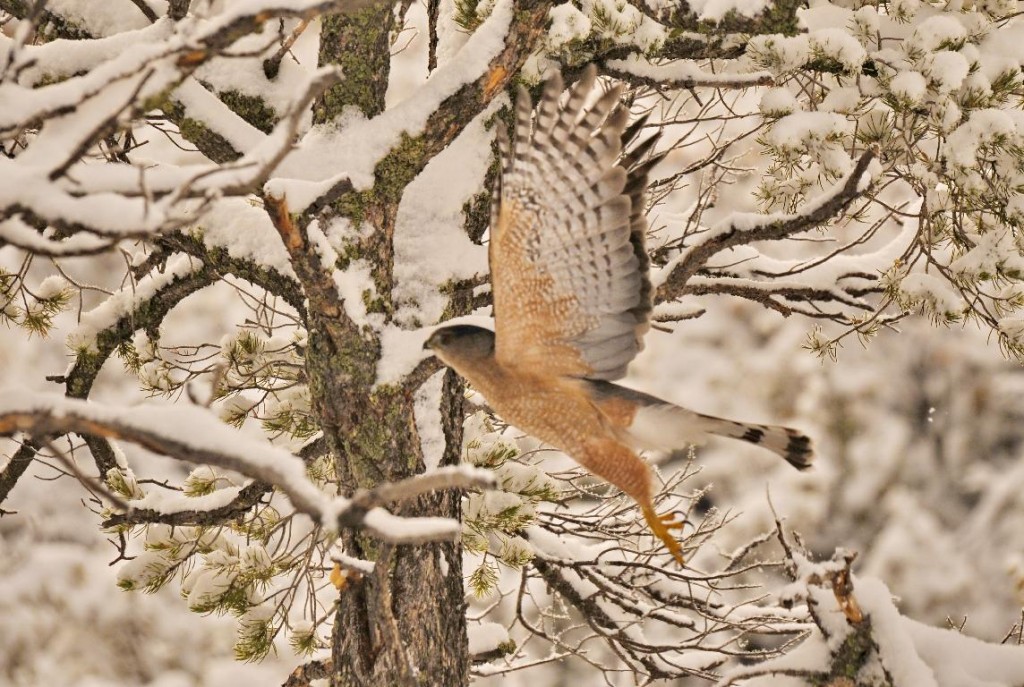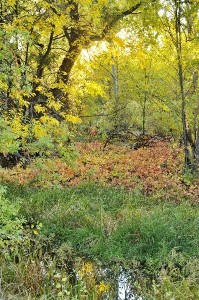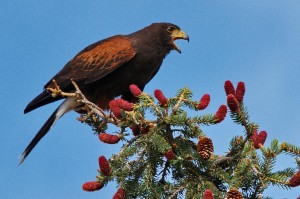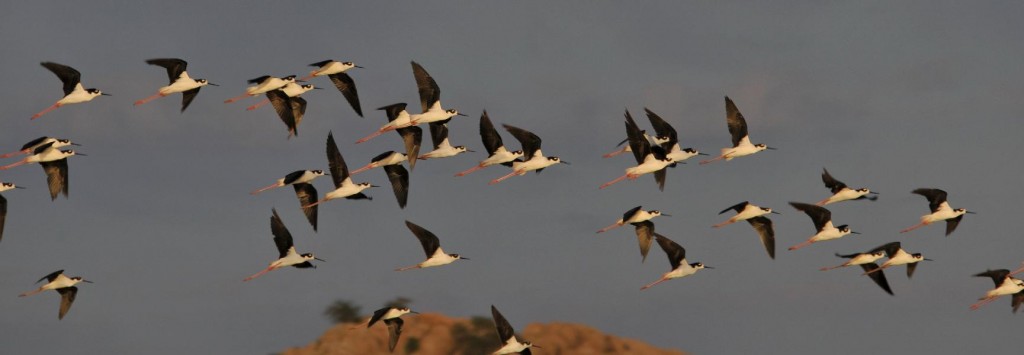Drifting along, like a tumbling tumbleweed. That catchy tune warbled by the Sons of the Pioneers somehow epitomizes nostalgia for the Old West. Never mind that the tumbleweed is a carpetbagger, an interloper, an émigré otherwise known as Russian thistle. I’ve heard tell that the Russkies sent it here as a kind of biological weapon, a plague on our plains, a prickly infestation designed to lay waste to our grasslands, to overwhelm us with its ability to take any of our attacks against it and come back stronger than ever. Where is the real truth here? Continue reading
Category Archives: Arizona
Granite Dells & the Lakes
Granite Dells and the Lakes—Central to Arizona
In Arizona, a state noted for natural wonders, Yavapai County stands out. Prescott’s physical environment—pine forests, chaparral, pinyon-juniper woodlands, grasslands, dramatic rock formations, and wetlands—is one of the reasons it is called “Everybody’s Hometown.” Watson and Willow Lakes in the Granite Dells dominate this landscape.
For the entire month of June, the Prescott Public Library Viewerie will display more than thirty large (some up to six feet in length) photographs in professional gallery mounts of Granite Dells and the Lakes (Watson & Willow) that stand as the centerpiece of the Tri-city area of Prescott, Prescott Valley, and Chino Valley in Yavapai County, Arizona. They represent the work of Walt Anderson, acclaimed nature photographer, and Joe Phillips, master printer. A reception open to the public is set for Wednesday, June 6, from 5:30-7:30 pm at the library.
This site presents an expanded tour of the content and images, with bonus photos and text added, but it cannot replace the impact of seeing the images in live time. Please try to visit the exhibition. Images are for sale from the photographer (geolobo@cableone.net or 928-445-7470), and other images and sizes, individually and lovingly printed by Joe, can be created for your needs. Here is the price list with images.
This exhibit celebrates our natural heritage and urges all citizens, including decision-makers, to prioritize protection and wise stewardship of our great natural assets. Right here, right now, in the heart of this watershed, we must act to keep what we love. Continue reading
Where do Toe-biters go when it Rains?
Where Do Toe-biters Go When It Rains?
- Floodbug
Curiosity is a well-known field mark of a naturalist, and I have learned to indulge my curiosity when an opportunity arises. Some years ago, I stayed with friends in the Chiricahua Mountains of SE Arizona, one of the dramatic “sky islands” of the Southwest. Back in the cooler, wetter Pleistocene, the forests marched across the valleys, allowing free commerce for animals and plants among the ranges. As conditions warmed and dried, the forests retreated to higher elevations, trapping survivors on habitat islands. Continue reading
I’m a Beaver Believer
So often we hear horror stories of environmental degradation. Once in awhile we need to hear the good news, the reversal of misfortune, and I’m here to tell you one such story. The Upper Verde River in Arizona has risen from its deathbed, and the main reason is the return of the beaver after the removal of the cows. Join me along the banks of Granite Creek as I tell my friend Joe about my impressions of the value of beavers in restoring an ecosystem. http://www.youtube.com/watch?v=kTlSKffiSPw&feature=youtu.be.
Aerial Assassin
Dining has its dangers. And I don’t mean indigestion or choking on a bone. I’m talking hazards for the local seed-eating birds—the doves, quail, sparrows, juncos, and finches that check out the seeds that I scatter on the ground each morning.
Winter’s icy chill has descended on this part of Arizona, and recent snow has frozen into a crunchy crust. Little soil is exposed, and even the shrubs continue to bear heavy blobs of snow. These are lean times for seed-eating birds; there is no dietary margin for error. Find enough to eat or die. Continue reading
When Resignation Means Renewal
A blustery stranger arrived unannounced on Friday. The day dawned clear like so many others. By 11 as I drove home from the college for a quick lunch, the unexpected guest had arrived, leaving the door open so that its forceful breath whipped up whitecaps on Watson Lake. Dust and leaves swirled in its powerful exhalations. Low clouds streamed over the rounded crests of the Bradshaw Mountains. Winter had suddenly returned to Arizona. Continue reading
The Call of the Wild: Are We Listening?
Deep within us we carry the genetic legacy of our distant ancestors. When we hear the mournful howl of a wolf, there is a shiver down our spine, a surge of adrenalin that we cannot control. We respond automatically and positively when we view a cute and cuddly creature or one of the “charismatic megafauna.” For some people, the call of the wild has become more of a whisper, but it’s there.
Recently I gave the keynote address for the 2011 Regional Urban Wildlife Symposium sponsored by the Open Space Alliance of Yavapai County, Arizona. Joe Phillips videotaped it and posted it on You Tube, so here it is if you want to hear and see my take on THE CALL OF THE WILD: ARE WE LISTENING?
Megadiversity of Moths
The scene: The Madrean Sky Islands, an archipelago of dozens of mountain ranges that unify the spirits of the Rockies and the Sierra Madre, the Sonoran and Chihuahuan Deserts. This is a land of astonishing diversity by almost any measure. The following story is based on a visit more than a decade ago to the Ash Canyon property of Noel McFarland in the SE part of the Huachucas, a range noted for abundant and varied birds, mammals, and reptiles.
But birds, mammals, and herps are not why I came to see Noel McFarland. He is a collector of diversity with a twist all his own. McFarland knows moths. I follow him through several rooms where he works. Noel collects more than moths, it seems, and twenty years’ accumulation of boxes, books, papers, and other memorabilia fills his spaces the way floral diversity fills a rainforest. Continue reading
Autumnal Equinox
Another summer has slipped over its equinoctial belt—its pride hath gone before the fall. And so it is for me, veteran of many celestial cycles. Basted over the coals of another Arizona summer, I am, at the very least, well-seasoned by now. Continue reading
Deepening the Time Scale: A Puzzle in Sycamore Canyon
Though each organism is inherently a time traveler, its genes a partial chronicle of its evolutionary history, we may be the sole species to be able to reflect on that deeper history. People with deep imaginations can visualize the ape in our behaviors, the prototypical vertebrate in our embryos, the symbiotic merger reflected in our mitochondria. Some can look at a hillside and envision it as a product of tectonic upheavals, erosional incisions and depositions, the lithification that turned sediment into rock that has weathered into a substrate supporting juniper, cactus, and spiny lizard. With some training, there is hope for those of us who don’t normally see so well. Our temporal blinders may be lifted, our spirits uplifted by the joys of discovery and insight. Informed imagination – that greatest of time machines – can take us further toward understanding the Sky Islands than mere physical descriptions ever will. Join me, then, for a little time travel, not to see it all (who has time?), but for a sample of how informed imagination works. Continue reading

